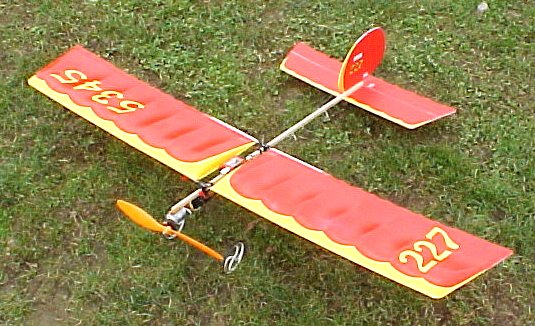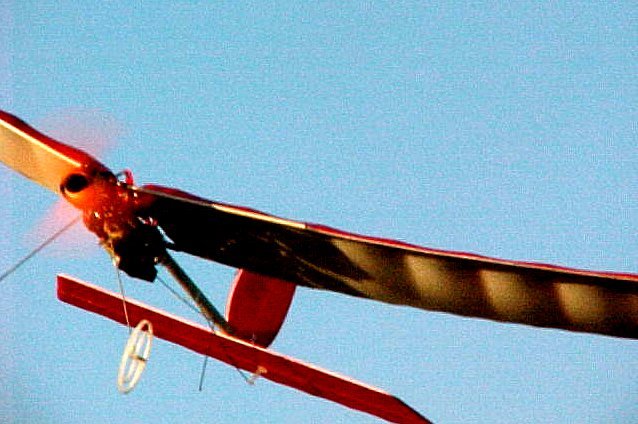

The GWS 'Pico-Stick' (Known in the US as the 'Lite-Stick') is a very simple and basic electric R/C 'Park flyer' which has done a great deal to promote the new breed of ultra light Almost-Ready-To-Fly (ARTF) model. The basic kit is a stick type model available with either a direct drive 280 motor or a smaller (50) motor with reduction gearing. Again, the geared version is available in 5.8:1 or 7:1 versions and other ratios are available.
The basic model gave rise to a version with a fuselage (the 'Pico-Stick-F'). This, in turn, led to a semi-scale Piper Cub and a Tiger Moth (others are to follow) and a whole range of larger semi-scale models. The basic stick model is also available with the wings and tail from the Cub (the 'Pico-J3-S'). Finally, for the moment, there is now a larger version (the 'Slow-Stick'), with a geared 280 motor.
While the Cub and Tiger Moth are normally supplied with the geared motor unit, conversion kits are available to replace this with the direct drive 280 motor. This may seem to be a backward step (with a diminutive 5 x 3 prop) but it works very well on the basic 'Stick'.
On the basic machine the motor or drive unit simply plugs on to the front end of the fuselage stick, which makes it very easy to change units, even on the field. What better way to play around with different motors, props and batteries. If you want/need more power, the geared unit is now available with two motors.
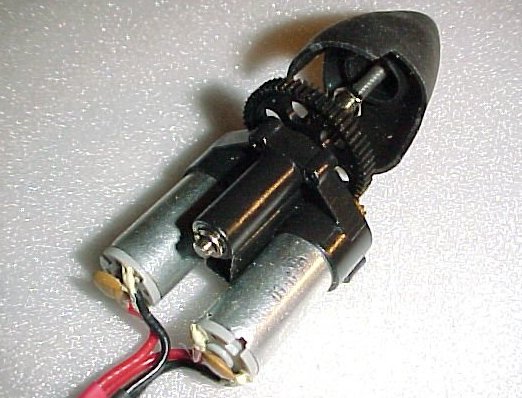
Despite doubling the current consumption, this only allows you to go up one or two sizes on the propeller. See my GWS page for more details. The real bonus is that you get roughly the same power as a geared 280 motor at around 1/2 ounce lighter in weight (GWS figures).
Construction of the model is very simple, since most of the various fittings simply slide on to the motor stick. Only the tail has to be glued to the stick (the glue is included in the kit, works well and has an intriguing smell). Individual wing panels plug into the fuselage fittings via 3mm bamboo dowels. These dowels are adequate provided that the overall weight is kept down. However, if the smallest available radio is not used and/or a larger battery pack is used, these can fail in the air. The worse that usually results from this is a broken prop or motor stick after the resulting contact with the ground.
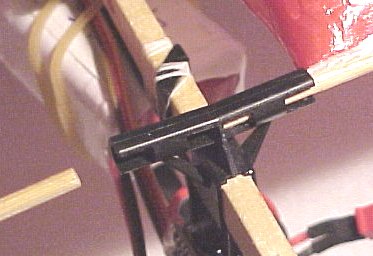
Lot's of people advise increasing the dihedral (usually by adding a string or wire between the wingtips). This is to increase the turning response for less experienced flyers. Those flexible wing dowels can be a help here because pulling in some up elevator increases the dihedral anyway. Heavier battery packs give the same effect.
The most obvious way to strengthen the dowels is to replace them with 3 mm dia carbon rod. The problem here is the risk of damaging the fuselage fittings (or the wing panels) in a crash.
My solution here is to replace the dowels with plastic tubing having an outer diameter of 3 mm and an inner diameter of slightly over 2 mm. The center of the fuselage fittings is then drilled through so that a piece of 2 mm carbon rod can be passed right through. The wing panels then thread onto this. If you crack the centre of the carbon rods the wings can now flex even more than previously but the rods won't fail.
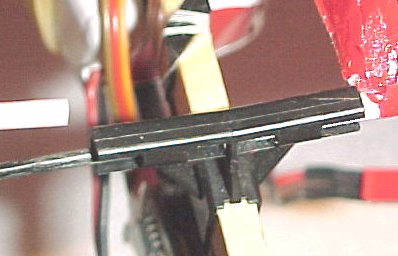
The wing panels themselves are fairly flexible and it is a good idea (though not essential) to add a spanwise strip of parcel tape (or spare decal material) along the bottom of the wing. I have had one wing panel fold upwards just outside the point where the dowels end, though this happened during ground handling, not in the air.
Do glue the tyres to the wheels with either the supplied glue or cyano. Otherwise, you will lose them.
250 or 300 mAH Nicads or NiMH work very well. Remember that the motor in the geared drive units is rated for a maximum of 6 cells. It is now possible to obtain 250 mAh Nicads which are the same size as 300 NiMH cells. I prefer these because they can be charged faster and have a better discharge curve.
My favourite is a 6 cell pack of 'AAA' size NiMH batteries. These are freely available from Maplins at a very low price and in a capacity of 750 mAh. I can get flights of around 25 minutes on both the geared unit (3.5:1 ratio) and the direct drive 280 motor. However, a 7:1 ratio drive unit is very marginal and the model will land under power with lots of charge left in the batteries. Changing from a 10 x 4.7 to a 9 x 7 prop helped, but you really need an extra cell - with a consequent shorter motor life.
| Motor unit | Gear ratio | Propeller | Battery (all NiMH) | Typical flight time (minutes) | Comment |
|---|---|---|---|---|---|
| GWS 280 motor | direct | GWS 5 x 3 | 6 x 750 mAh | 24 | |
| Cox 5 x 3 | 6 x 750 mAh | 18 | |||
| GWS IPS unit | 3.5:1 | GWS 7 x 6 | 6 x 300 mAh | 11 | |
| 6 x 750 mAh | 27 | ||||
| Gunther 7 x 6 | 6 x 750 mAh | 21 | |||
| GWS 8 x 4.3 | 6 x 300 mAh | 11 | |||
| 6 x 750 mAh | 28 | ||||
| GWS IPS unit | 7:1 | GWS 10 x 4.7 | 6 x 750 mAh | 17 | Poor performance |
| GWS 9 x 7 | 6 x 750 mAh | 25 | |||
| GWS IPSD dual motor | 4.1:1 | GWS 9 x 7 | 6 x 750 mAh | 13 | Very good performance |
| 280 motor | 3:1 (not GWS) | GWS 9 x 7 | 6 x 750 mAh | 9 | Good performance |
The dual motor unit gives excellent performance, but the weight (and flying speed) are way over the limits of the standard wing fixing and something will fail if you go that route.
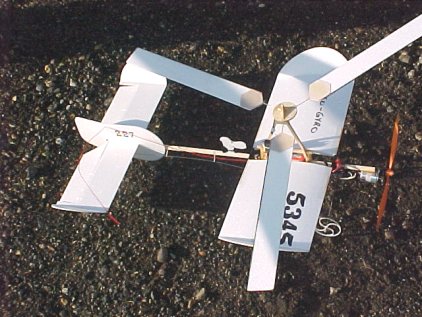
More power was clearly needed and I fitted a geared 280 size motor salvaged from a Nitto 'Kitty'. Still no luck, so I reverted to the standard configuration with this power and added painted trim to the wings to produce a 'Pico-Racer'. I intend to return to the gyro at some time in the future.
